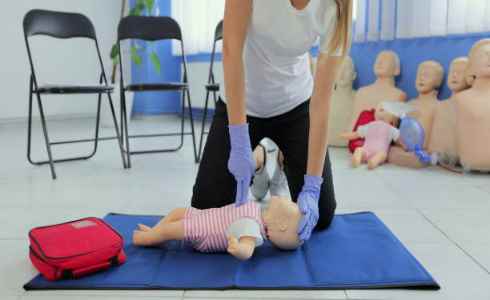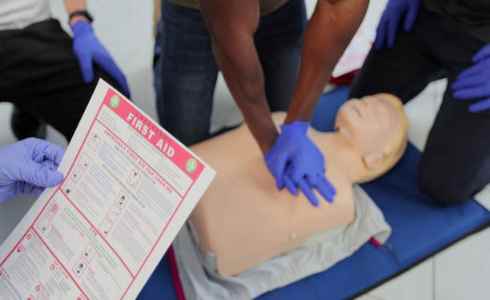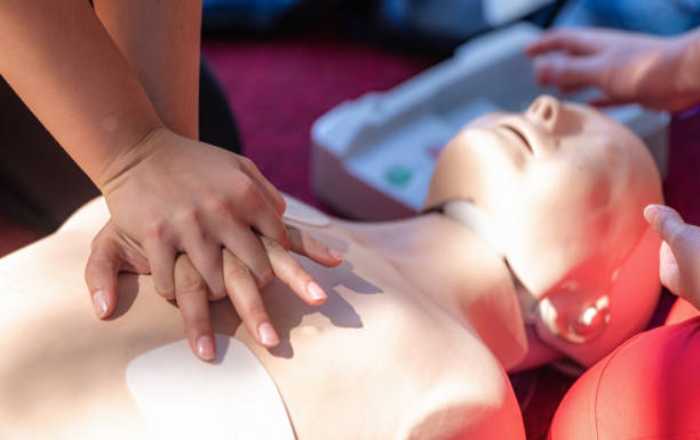In a world where medical emergencies are more common than car accidents, cancers, and influenza, CPR certification is no small matter. It’s about being a linchpin in the chain of survival, a person who steps up when seconds count.
Performing CPR can prevent death by keeping oxygenated blood flowing to the heart and brain until emergency medical services arrive. The process consists of chest compressions and rescue breaths.
Boosts Chances of Surviving Cardiac Arrest

During cardiac arrest, oxygenated blood is no longer flowing to the brain. Without immediate action, the victim will experience severe brain damage within four minutes and die within ten minutes. Cardiopulmonary resuscitation (CPR) manually pumps the chest to keep blood flow going.
Studies show that in counties with higher rates of CPR certification, survival from cardiac arrest is 9.5 percent more than in those with lower rates. Although it’s a correlation, the link is significant enough that businesses may want to consider implementing training and making sure employees are up to date.
There are many methods of CPR training, including certified instructor-led classes and layperson instructors. Research also supports the use of online and video self-instruction with practical skills modules as an effective way to train individuals. These alternative methods offer more convenience than traditional training, and they can help reduce costs and improve access to education. In addition, they have the potential to reach broader segments of the population.
Saves Lives
CPR isn’t a magic bullet that guarantees survival, but it does improve the odds dramatically. It acts as a vital link in the chain of survival, buying time until more advanced medical help arrives.
Even though the process is simple, there are nuances to it that require training and practice. The force of chest compressions, the cadence and depth of breaths, and whether the person is an adult or child all have to be considered.
Most people don’t have an RN or MD after their name, but they do have the power to save lives. CPR and first-aid training equips bystanders with the tools they need to act in an emergency. It’s a small investment of time that can have a life-changing impact. For those interested in learning CPR, the American Heart Association offers classes for adults and infants that can be taken online or in a classroom. Re-certification is recommended every 2 years to ensure skills remain fresh.
Helps Prevent Brain Damage

During cardiac arrest, the brain and other organs do not receive oxygen. CPR keeps blood circulating and delivers oxygen to the vital organs. It also buys time for medical professionals to arrive. Research has shown that a victim’s chance of survival improves drastically with immediate and proper chest compressions.
Without CPR, the brain will begin to die in as little as four minutes. CPR keeps the blood circulating and prevents brain damage until professional help arrives. Having a heart attack or going into cardiac arrest can happen anywhere, at any time. Being able to administer CPR and use a defibrillator can save lives in those situations.
While many people only think about getting CPR training for health care related professions, it is important for everyone to have the knowledge and confidence to act in a crisis situation. There are classes for people of all ages and educational qualifications, so there is no excuse not to take the course. It is recommended that you get recertified every two years to ensure your skills are up to date.
Increases Confidence
Those who are trained in CPR and other emergency life-saving procedures can boost their confidence when they face a medical crisis. They can respond quickly to an incident, helping to keep blood circulating and oxygen flowing to the brain until first responders arrive on scene.
A study showed that people who are trained in CPR and who have received refresher training are more likely to feel confident in their abilities to perform CPR. Even if they don’t have a medical background, knowing the correct steps to take can give them the confidence that they’re not only saving their loved one but also protecting themselves from legal liability.
Conclusion:
It’s not just the confidence that people gain from CPR training, though. It’s the knowledge that they can save a life if needed, whether it’s their child, relative, friend, or an acquaintance. In a world where emergencies are often unpredictable, this type of knowledge is an invaluable asset.

